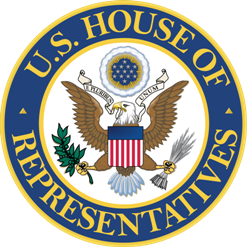The 115th Congress: Feeling Special
Not since before World War II have five U.S. House special elections been conducted during the first six months of a new Congress

In a legislative body with 435 members – of varying ages, health, and political ambitions and opportunities – it is almost a certainty that at least one member’s seat will become vacant during any given year.
In fact, dating back to at least the end of the Civil War, Smart Politics has found there has only been one calendar year in which not a single special to the chamber was conducted – in 2000 during the final year of the 106th Congress.
However, the 115th Congress has only been in session for 66 days, so if five vacancies sounds like a lot at this point on the calendar – it is.
A Smart Politics analysis finds that the five U.S. House special elections scheduled through June of 2017 is the largest number during the first six months of a newly convened Congress since the 77th Congress in 1941.
In 1941, more than a dozen special elections to the chamber were conducted including seven during the first six months:
- NY-17 (March 11th): Republican Joseph Baldwin (replacing GOPer Kenneth Simpson)
- OK-07 (April 1st): Democrat Victor Wickersham (replacing Democrat Sam Massingale)
- VA-02 (April 8th): Democrat Winder Harris (replacing Democrat Colgate Darden)
- NY-42 (April 22nd): Republican John Butler (replacing Democrat Pius Schwert)
- MD-06 (May 27th): Democrat Katharine Byron (replacing Democrat and husband William Byron)
- NC-05 (June 14th): Democrat John Folger (replacing Democrat and brother Alonzo Folger)
- AL-07 (June 24th): Democrat Carter Manasco (replacing Democrat Walter Bankhead)
From the 78th Congress in 1943 through the 114th Congress in 2015, there were only four instances in which four specials were conducted from January through June after the convening of a new Congress:
- 1947: Electing Democrat Robert Jones in AL-08 (January), American Laborite Leo Isakson in NY-24 (February), Glenn Davis in WI-02 (April), and Russell Mack in WA-03 (June)
- 1969: Electing Democrat Ed Jones in TN-08 (March), Democrat David Obey in WI-07 (April), Republican Barry Goldwater, Jr. in CA-27 (April), and Democrat John Melcher in MT-02 (June)
- 1983: Electing Republican Phil Gramm in TX-06 (February), Democrat Gary Ackerman in NY-07 (March), Republican Dan Schaefer in CO-06 (March), and Democrat Sala Burton in CA-05 (June)
- 1993: Electing Democrat Bennie Thompson in MS-02 (April), Republican Rob Portman in OH-02 (May), Democrat Peter Barca in WI-01 (May), and Democrat Sam Farr in CA-17 (June)
The five specials on the calendar in 2017 is more than double the average of 2.2 held during the first six months of a new Congress across the 38 cycles since the 78th Congress convened in 1943.
None were conducted during this six-month period in 1995 and 2007 with only one held in 1943, 1955, 1957, 1965, 1985, 1987, 2005, and 2011.
The 115th Congress still has a way to go to break the record for the largest number of specials conducted during the first 12 months of a new Congress since the beginning of World War II. Thirteen were held in 1947 with ten in 1951, eight in 1953 and 1989, and seven in 1961, 1969, and 2001.
Follow Smart Politics on Twitter.

Thank you for creating an informative and interesting political site.